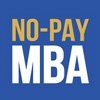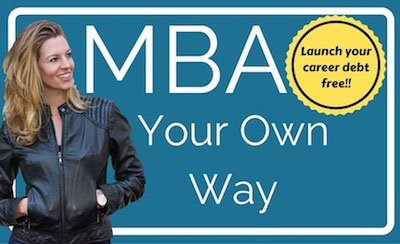
Crafting your own No-Pay MBA requires a bit more creativity than simply enrolling in an off-the-shelf business program. That said, the process is fun, and it allows for plenty of flexibility – and of course an enormous savings. Here’s how to do it:
1. Ask yourself: What do I hope to achieve by getting an MBA?
Your goal should be realistic and attainable. You will probably want to determine if your needs are better served by getting a traditional MBA. For example, if you want to be a Wall Street investment banker or stock broker, you might need the connections and the cred that come with a traditional MBA. However, if you want to start your own business, advance in your current job, or be eligible for jobs related to your current field that require an understanding of business, a No-Pay MBA could be perfect for you. You can see more of my thinking on this topic here. You might even float the idea to your supervisor by saying something like, “I’m looking into taking business courses. Would it be possible for me to take on some new responsibilities as I acquire new skills?”
2. Ask yourself: Do I have the time to commit to earning an MBA?
This is a very important step. You should budget at least four hours per week per course. If you plan to take two courses at a time (which is what I am doing), then you should expect to spend eight hours each week doing coursework. When I first started my No-Pay MBA I was between jobs, and I loaded up on courses, taking four at once, which was practically a full time job! Now that I’m working, I don’t have time to listen to lectures and do homework during the week, so I block off Saturday mornings to work on my MBA.
3. Make a list of topics you want to cover
I made my checklist by consulting the curriculum pages on the websites of Wharton, Harvard Business School, MIT’s business school, and a couple of others. You could do the same, or you could use the checklist below. I would caution against trying to duplicate my MBA or any other MOOC-based MBA course for course – as per the recommendation in this article, for example – because course availability is not guaranteed from semester to semester. Rather, I would focus on one set of topics during the first year (or first half) and a second set of topics during the second year/second half of your MBA. Check out this post and this page to see how I’ve done my first year.
A general checklist is as follows:
First year
These core courses:
o Accounting
o Corporate Finance
o Marketing
o Management (I would recommend at least two courses in management in the first year. These could include operations management, project management, leadership, small business management, etc.)
Plus three of the following:
o Technology in business
o Microeconomics
o Business ethics
o Organizational psychology
o Human resources management
o Entrepreneurship
o Business innovation
Second year
o Advanced topics in finance, corporate valuation, or accounting
o Business planning
o Business ethics
o Advanced topics in management
o Supply chain management
o Three to four courses related to an area of particular interest (mine is sustainable supply chain management for agri-business)
4. Set ambitious but realistic targets
Now that you have your checklist and you’ve made a commitment to spend time working on your MBA, figure out how many courses you can take each semester and how long it will take you to finish your MBA. Your biggest challenge will be staying motivated, so I suggest holding yourself to a tight timeline. Remember that MOOCs tend to be shorter that regular courses, so you can do more of them in a year. I’m planning to finish my MBA in under 3 years, while working full time.
5. Look at this list and register for courses
As far as I can tell The MOOC List is a complete listing of free courses from all the major MOOC providers. By checking the “business and management” category frequently, you’ll stay up to date on all the free courses that might relate to your No-Pay MBA.
6. Start racking up the SOAs!
Before you know it, you will have a (virtual) pile of Statements of Accomplishment, certificates of completion, and other documentation to show that you are mastering the skills you’ll need in the world of business. As I’ve mentioned previously, I’m still skeptical of Statements of Accomplishment and the like, and I’m not convinced that you should pay anything to receive them. However, I recommend at least keeping a record of the courses you’ve completed and the skills you’ve learned so that you can present them to future employers.
7. Let me know how your No-Pay MBA is going
Okay, this last step isn’t strictly necessary, but I’d love to hear from you. And I’ll make you a deal. If you write to me and tell me that you’re doing a No-Pay MBA, I will post your picture and a short write up about your background, your course of study, and your career goals to my website.



